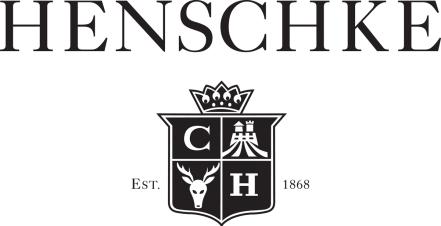Henschke
Croft Chardonnay
Henschke
Croft Chardonnay
Fifth-generation winemaker Stephen Henschke and his wife Prue purchased the Lenswood property in the Adelaide Hills in 1981. The chardonnay vineyard, which consists of seven clones, has taken its name from Frederick Croft, an orchardist who took up a neighbouring property in 1938.
Wine Production
Extremely heavy winter rainfall and ferocious spring winds and hail set up one of the most challenging vintages we have ever experienced at Lenswood. Flowering was late, occurring in December rather than November, in rare calm and sunny weather which set us up for good yields. The conditions post-Christmas were characterised by elevated evening temperatures, heavy rain every four days, foggy mornings and low day time temperatures. Harvest started in March; three weeks later than usual. By Easter, all Adelaide Hills whites and our pinot noir were safely in the winery, and in excellent condition despite 760mm falling during the growing season. This was a vintage saved in the vineyard by the outstanding work of the Adelaide Hills viticultural team under extremely trying conditions, with results that exceeded expectations.
Tasting Notes
Pale gold in colour. Seductive aromas of pear skin, grapefruit, white stone-fruit, citrus blossom and white flowers are complemented by hints of apple, lemon curd, clove spice and toasted almonds. Intense and focussed, the palate shows layer upon layer of pear and white peach, tightly wound by a deliciously creamy texture, and perfectly balanced with nectarine acidity and subtle oak nuances, for a powerful yet elegantly restrained, lingering finish.
Food Pairing
Steamed pomfret fish with local pipis and sea vegetables in a light jellyfish tamarind broth.
Fifth-generation winemaker Stephen Henschke and his wife Prue purchased the Lenswood property in the Adelaide Hills in 1981. The chardonnay vineyard, which consists of seven clones, has taken its name from Frederick Croft, an orchardist who took up a neighbouring property in 1938.
Wine Production
Extremely heavy winter rainfall and ferocious spring winds and hail set up one of the most challenging vintages we have ever experienced at Lenswood. Flowering was late, occurring in December rather than November, in rare calm and sunny weather which set us up for good yields. The conditions post-Christmas were characterised by elevated evening temperatures, heavy rain every four days, foggy mornings and low day time temperatures. Harvest started in March; three weeks later than usual. By Easter, all Adelaide Hills whites and our pinot noir were safely in the winery, and in excellent condition despite 760mm falling during the growing season. This was a vintage saved in the vineyard by the outstanding work of the Adelaide Hills viticultural team under extremely trying conditions, with results that exceeded expectations.
Tasting Notes
Pale gold in colour. Seductive aromas of pear skin, grapefruit, white stone-fruit, citrus blossom and white flowers are complemented by hints of apple, lemon curd, clove spice and toasted almonds. Intense and focussed, the palate shows layer upon layer of pear and white peach, tightly wound by a deliciously creamy texture, and perfectly balanced with nectarine acidity and subtle oak nuances, for a powerful yet elegantly restrained, lingering finish.
Food Pairing
Steamed pomfret fish with local pipis and sea vegetables in a light jellyfish tamarind broth.
Brand Materials
Vineyard & Production Info
Winemaking & Aging
Analytical Data
About the Vineyard
At 550m, the Lenswood vineyards offer not only magnificent views over the traditional vine country but also higher rainfall and humidity at the right time of the year, cooler temperatures to retain high natural acidity, and still enough sunshine to fully ripen the grapes.






